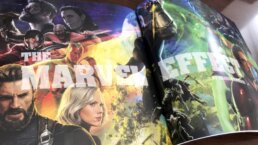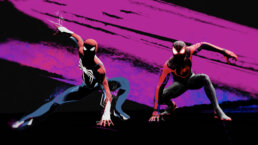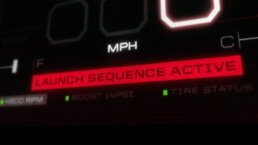Every day, technology takes impressive steps into the future. Breakthroughs in emerging technologies have created a path where gadgets once only seen on screen in science fiction films could eventually become tangible and obtainable.
In our previous blog, “Converging Breakthroughs: Blending AI & AR for Future Technologies”, we discussed how these two industries could come together to bring this futuristic film technology to life. How is this futuristic tech seen in films created, when nothing like it exists in our current technological climate?
HUDS IN CAPTAIN AMERICA: THE WINTER SOLDIER PROVIDING A BASIS FOR JEEP AR HUDS
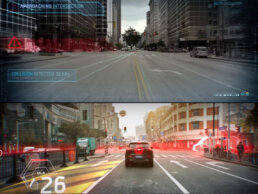
At Perception, whether we’re creating a holographic game or a 3D interactive AI assistant, we aren’t just pulling technology design concepts from thin air. We are actually studying technology that currently exists very closely and applying it to these films.
At the heart of everything we create is a backstory. Even for the smallest of interfaces, each of our designs are rooted in having a purpose and a function. That purpose is pulled from existing technologies and elevated to fulfill a need or capability that has yet to be solved. It is here that we find inspiration to include specific design details to push this fictional technology beyond what is possible today and drive it into the future.
HOLOGRAM GAMES IN GUARDIANS OF THE GALAXY: VOL 3
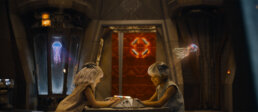
With the technology we design for film, we are constantly researching existing and new breakthrough technology. The team is always considering how can we push these innovations another step further. What problems does this technology currently face? What limitations does it have? How can our team solve those issues and break those restrictions to elevate this technology beyond what was originally intended? Even if those solutions aren’t achievable with our society’s means, it provides a basis for how this technology can be taken to the next level for cinema.
We applied this notably for Tony Stark’s Smart Phone. For this device, all we knew at the time was that it was highly advanced and it was made of transparent glass. Nothing similar to this smart technology currently existed and our team had to conceptualize what functions this phone could have and how glass could be advantageous, rather than a hinderance. At the time, current breakthroughs of transparent televisions and computers had not yet been realized as they are today. Instead, we looked to current phones, researched what was desirable, what held these phones back and how we could break through that barrier for Tony’s phone.
GLASS PHONE PROTOTYPE
Instead of simple pages to swipe through with a standard application grid, we opted for a fluid circular design, reminiscent of Tony’s chest arc reactor, with dials and pop up windows that are summoned based on inputs. We also included intelligent inference, implying the phone is smart enough assume what the user needs to access next. A gentle blue backlight helps provide a hardly noticeable backdrop for the phone’s applications. This still allows the phone to boast its transparency but makes the operations easier to view. Our designs helped build the foundations for glass technology, which has carried through future films and was even expanded further by our team in Black Panther: Wakanda Forever.
STARK SMART PHONE
Another method we utilize when creating futuristic technology is blending current technologies, industries or cultures to create something incredibly unique. When we were tasked with designing an innovative technology system for Black Panther, our team developed Vibranium Sand. At face value, it seems like this smart matter technology wouldn’t exist. However, the roots of Vibranium Sand are based in real world, current technology: Acoustic Levitation.
VIBRANIUM SAND ACOUSTIC LEVITATION SHAPE TEST
In our research for Black Panther, we discovered that the University of Tokyo was studying Acoustic Levitation. Using speakers, the University of Tokyo team was able to levitate and vibrate little foam particles. Once the particles were trapped in the sound waves produced by the speakers, they had distinct, animated reactions. We took this research and applied it to the environment of Wakanda, an advanced civilization that is in touch with the natural world.
We switched the foam beads out for sand, referencing the art and communication seen in sand and dirt drawings from African cultures. Then, we created out own Vibranium Sand models and tables to test the capabilities and design properties of the technology. These findings eventually became merged with holograms and displays to create the new and innovative technology of Vibranium Sand.
VIBRANIUM SAND USED WITH KIMOYO BEADS
Despite designing technologies for the future, we are always studying the technology of today. At Perception, looking back is also looking forward. We take inspiration from problems that have been solved and problems still unanswered to explore all the possibilities in a new way, with less limitations. We build upon our references to explore breakthroughs, giving each piece of technology a tangible, comprehensible background with the Perception stamp of futuristic innovation.
Experience Perception
Perception is an Emmy nominated design lab pioneering the visionary process of Science Fiction Thinking to architect the future. We divide our time equally between the parallel worlds of science-fiction—working with trailblazing filmmakers, and science-fact—collaborating with the world’s most innovative technology brands.
